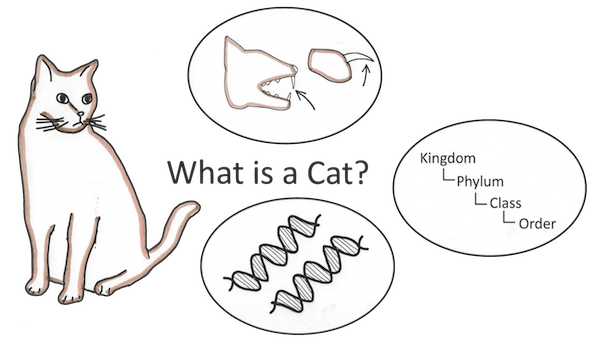
A few weeks back I had coffee with Kalid Azad, who runs Better Explained, a blog and book that focuses on the use of intuition to understand “gnarly” subjects like math and programming. His tagline is “Learn right, not rote”. I love that.
Kalid made a point that day that stuck with me. Here it is from a blog post called “Developing Your Intuition for Math”.
Our initial exposure to an idea shapes our intuition. And our intuition impacts how much we enjoy a subject. What do I mean?Suppose we want to define a “cat”:
- Caveman definition: A furry animal with claws, teeth, a tail, 4 legs, that purrs when happy and hisses when angry…
- Evolutionary definition: Mammalian descendants of a certain species (F. catus), sharing certain characteristics…
- Modern definition: You call those definitions? Cats are animals sharing the following DNA: ACATACATACATACAT…
The modern definition is precise, sure. But is it the best? Is it what you’d teach a child learning the word? Does it give better insight into the “catness” of the animal? Not really. The modern definition is useful, but after getting an understanding of what a cat is. It shouldn’t be our starting point.Unfortunately, math understanding seems to follow the DNA pattern. We’re taught the modern, rigorous definition and not the insights that led up to it. We’re left with arcane formulas (DNA) but little understanding of what the idea is.
Precisely. I’ve felt this often in math classes. I needed to understand the context and big ideas first, the reasoning. Only then could I make sense of the formulas. For explanations to work, we sometimes have to trade technical accuracy for understanding as a first priority and I think that is the essence of Kalid’s cat example.
We know so much about a subject that we forget what makes it understandable to others. The precision and accuracy that we value becomes a liability, making it difficult to relate the big, fundamental ideas that make explanations work from the start. This is the Curse of Knowledge at work.
When you need to explain an idea, think about Kalid’s cat. Look at your explanation and ask: Am I focused on mammalian DNA or the furry beasts with claws and teeth? I think you’ll find that, depending on the audience, the teeth are a good place to start because they build the understanding helps everything else make sense.
Read Kalid’s entire post here.
NOTE: If you're interested in learning in-depth about the skill of explanation and how to make Common Craft Style videos, check out our online courses at the Explainer Academy.